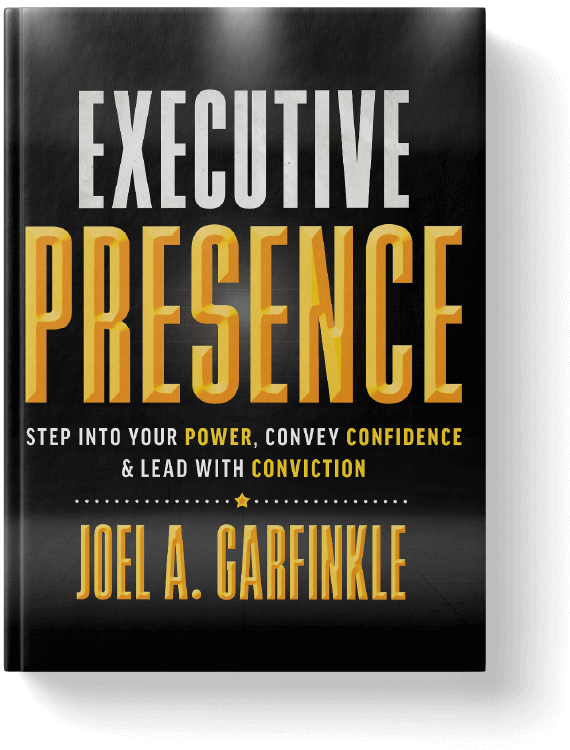What Is Executive Presence
and How Do You Get It?
Learn what executive presence is, why it matters for leaders, and how to develop the confidence, clarity, and influence to lead with impact.
You can’t realize your full potential as a leader without executive presence. As you rise up in your organization, executive presence becomes more and more critical. The higher the stakes, the more you need that power and presence.
That’s where the Executive Presence Model comes in. It shows the traits and behaviors leaders must master to command a room, influence decisions, and inspire confidence.
What Is Executive Presence (Definition)
Executive presence is the combination of confidence, clarity, and credibility that enables leaders to command attention and influence others. Executive presence definition is all about how you show up: radiating gravitas, demonstrating authority, and speaking with conviction. People will then have confidence in your judgment and follow your lead.
Executive PResence: Step into your power, Convery Confidence & Lead with Conviction.

What Is Strong Executive Presence?
When a leader with strong executive presence speaks, people listen, feel inspired, and know that person has command of the room. They speak with conviction, confidence, and certainly. Their tone, posture, and words convey confidence and composure—signals that inspire trust and respect.
Strong executive presence is what gives the best leaders their persuasive power, the respect of everyone in their company, and the ability to influence people at all levels—no matter what position they hold.
All leaders with executive presence have a handful of key executive presence qualities. Here are the key traits of executive presence:
• Confidence
• Charisma
• Decisiveness
• Boldness
• Insightfulness
• Powerful, clear speech
Do you see these qualities within yourself in certain situations?
If you have executive presence, you have an aura that draws others to you. You might also think of it as a magnetism or charisma. You’re a compelling force inside your organization and team. When you speak, people listen, feeling inspired and uplifted. You convey confidence, command respect, make an impact, provide value, and get noticed.
You may also have a nascent executive presence that reveals itself in certain contexts. Even if you haven’t yet cultivated executive presence, you may have particular qualities that make up an important part of the whole picture. You can leverage those qualities to begin projecting executive presence.
Ready to Build Executive Presence?
Why Do You Need Executive Presence?
Executive Presence – What It Is, Why It Matters, and How to Build It?
What Does Powerful Executive Presence Look Like in Practice?
Ready to Build Executive Presence?
How to Develop Executive Presence?
You can learn how to build executive presence through deliberate practice, focusing on five areas that strengthen your gravitas, communication, and visibility. If you’re seeking to cultivate executive presence through training these five areas will form the foundation of your development.
Articles
25 Must-Read Articles on
Executive Presence
Want to begin developing your executive presence? Explore expert insights from Joel Garfinkle on
confidence, communication, gravitas, and more.
